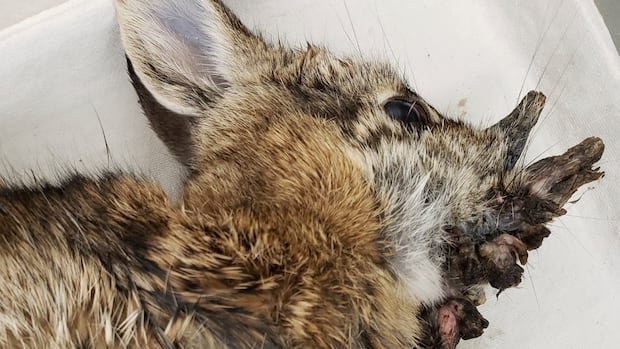A cluster of rabbits in Colorado displaying abnormal, horn-like protrusions may evoke images from a B-grade horror movie, yet experts reassure that there is no cause for alarm – the furry creatures are simply affected by a fairly common virus.
The cottontails recently observed in Fort Collins have contracted the mostly harmless Shope papillomavirus, which triggers wart-like growths that extend from their faces resembling metastasizing horns.
While viral images have led to unflattering monikers like “Frankenstein bunnies,” “demon rabbits,” and “zombie rabbits,” the animals’ condition is not unprecedented, with the virus sparking ancient folklore and driving scientific exploration nearly a century ago.
The virus is believed to have influenced the age-old jackalope legend in North America, featuring a rabbit with antlers or horns, among other animal amalgamations. Additionally, the disease in rabbits has contributed to scientists’ understanding of the link between viruses and cancer, such as the human papillomavirus responsible for cervical cancer.
Named after Dr. Richard E. Shope, a Rockefeller University professor who identified the illness in cottontails in the 1930s, the virus has garnered attention following reports of rabbit sightings in Fort Collins, located 105 kilometers (65 miles) north of Denver. Residents began noticing the rabbits in town and sharing images on social media.
Kara Van Hoose, a spokesperson for Colorado Parks and Wildlife, mentioned receiving inquiries about the rabbits sighted in Fort Collins. She explained that it is not uncommon to encounter infected rabbits, especially during the summer when the fleas and ticks transmitting the virus are most active.
Van Hoose clarified that the virus can spread among rabbits but does not affect other species, including humans and pets. The growths resemble warts but may appear horn-like if they grow extensively, potentially causing issues if they obstruct the rabbits’ eyes or mouths. However, rabbits’ immune systems can combat the virus, leading to the eventual disappearance of the growths.

